How To Increase Cannabis Yields With CO2
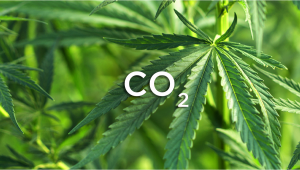
- 1. What exactly is co2?
- 2. How do plants use co2?
- 2. a. Transpiration
- 2. b. Photosynthesis
- 2. c. Respiration
- 3. When should you use co2?
- 4. Pros and cons of co2
- 5. How much co2 should i use?
- 6. Recommendations
- 7. Calculating the amount of co2 required
- 8. How to add co2 to your grow room
- 8. a. Alternative co2 injection methods
- 9. In conclusion
CO2 is commonly found in the air at 400ppm and plants need it as much as they need NPK. Carbon dioxide (CO2) is essential for photosynthesis and when we increase the levels (along with the appropriate environment) it will help our plant grow faster, tougher and produce more buds. Cannabis growers are well aware of the critical inputs that their plants require. Of course, adequate lighting, water, and nutrients are required to keep plants alive and help them to thrive. Add some training and biological inoculants, and you’ll take your results to the next level. However, many of us often take the effects of CO2 for granted. Why? Because it’s something we normally don’t need to think about because our plants inhale it from the atmosphere without any intervention required. After intaking CO2, plants harness it, along with water, to conduct photosynthesis.
During this process, plant cells oxidize water and reduce CO2. This results in the conversion of water into oxygen (which plants exhale) and glucose into oxygen. Think about it like this: all carbohydrates are carbon-based. Because plants are able to convert atmospheric CO2 into sugars, they essentially eat the atmosphere. Even more, interestingly, plants don’t use the majority of the sugars that they make through photosynthesis to power their cells. Instead, they send sugars down into the rhizosphere—the slither of space that surrounds their roots. They do this to attract a wealth of different life forms into their close proximity, including bacteria and fungi. This increases nutrient cycling and therefore nutrient availability in the root zone. Additionally, they also trade sugars with symbiotic fungi that offer specific nutrients in return. Plus, they use these sugary compounds to bait bacterial cells that they consume whole and extract nitrogen from during the rhizophagy cycle.
So, does CO2 really increase the yields of feminized seeds? This can be a tricky question to answer! Supplementing your grow room with additional CO2 may increase overall yields by up to 30%, but it is important to understand that any increase in yields will be a result of a combination of factors. Before we get ahead of ourselves let's first quickly go over exactly what CO2 is, and how CO2 is utilized by cannabis plants in order to understand how it works.
1. What Exactly is CO2?
Carbon Dioxide, or CO2, is a naturally occurring gas that is vital for all life on earth. It is an odorless gas consisting of one part carbon and two parts oxygen. Animals breathe in oxygen and exhale carbon dioxide, while plants absorb carbon dioxide and release oxygen. CO2 is an essential part of the ecosystem of our planet and without it, we would not have life as we know it.
With the rise of the public understanding of global warming in the past 2 decades, CO2 has earned a somewhat bad reputation. And sure, while we all should be aware of the rising CO2 levels in our atmosphere, and be trying to do our best to reduce CO2 usage in our day-to-day lives, supplementing our grow areas with minuscule amounts of the gas is more than acceptable.
2. How Do Plants Use CO2?
Like all other green plants, cannabis utilizes a process known as “photosynthesis” to convert light energy into chemical energy. During photosynthesis, plants capture this light energy which is then used to convert H2O, CO2, and minerals into energy-rich compounds like oxygen and carbohydrates (or sugars).
Plants “breathe” CO2 through small holes called stomata, this breathing process along with the appropriate light (light fixture or sunlight) will allow your plant to produce more sugars and oxygen; the sugars being used in plant growth and oxygen the oxygen released back in the air.
Just like all plants, cannabis plants “breathe”, if provided the right way, it can make their cells multiply faster and result in bigger yields. Just make sure that you do it correctly because CO2 can be harmful, resulting in stretched plants with yellow leaves and no buds at all.
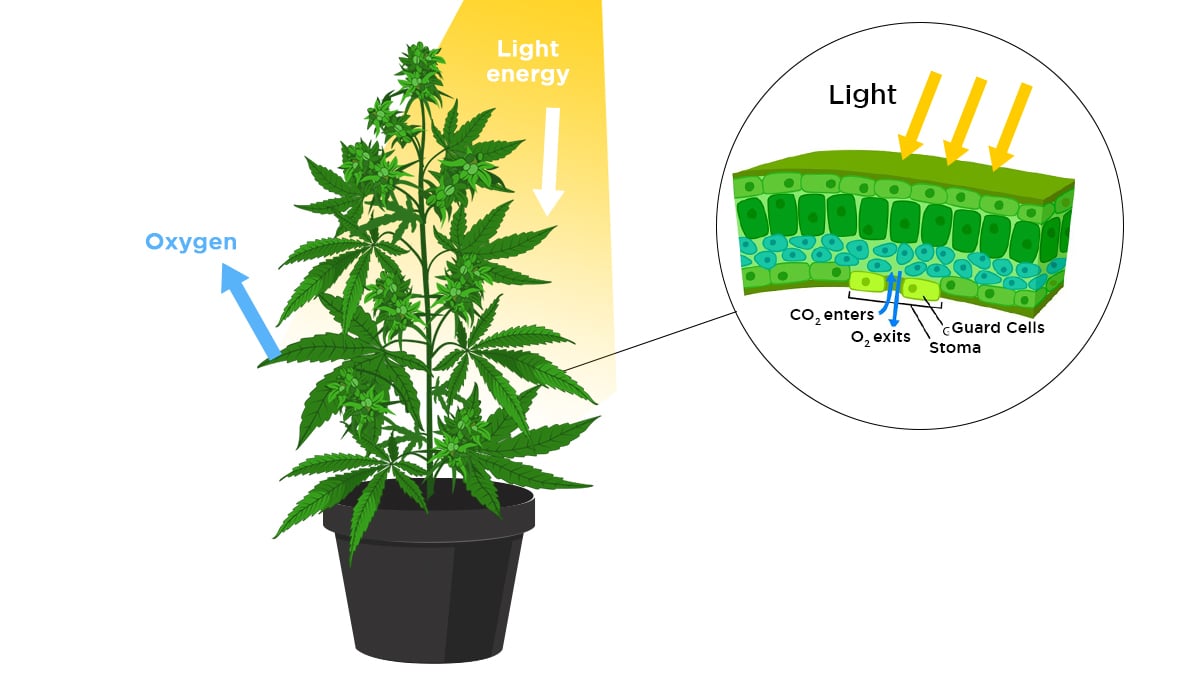
An increased amount of CO2 in the grow room will allow your plant to perform photosynthesis faster, absorbing more light and nutrients, resulting in faster growth and in bigger yield because the buds develop denser.
Transpiration
CO2 levels are also important for the transpiration process which is vital for all plants, including cannabis.
Transpiration is basically the water flow that begins with the roots absorbing water and ends when that water is released into the air through the stomata as vapor.
This process is common in most living beings, such as plants, humans, and animals, so you definitely know how it works, when talking about plants almost 100% of the water is released, allowing the plant to transport and use the nutrients while making sure the plant “functions” as it should.
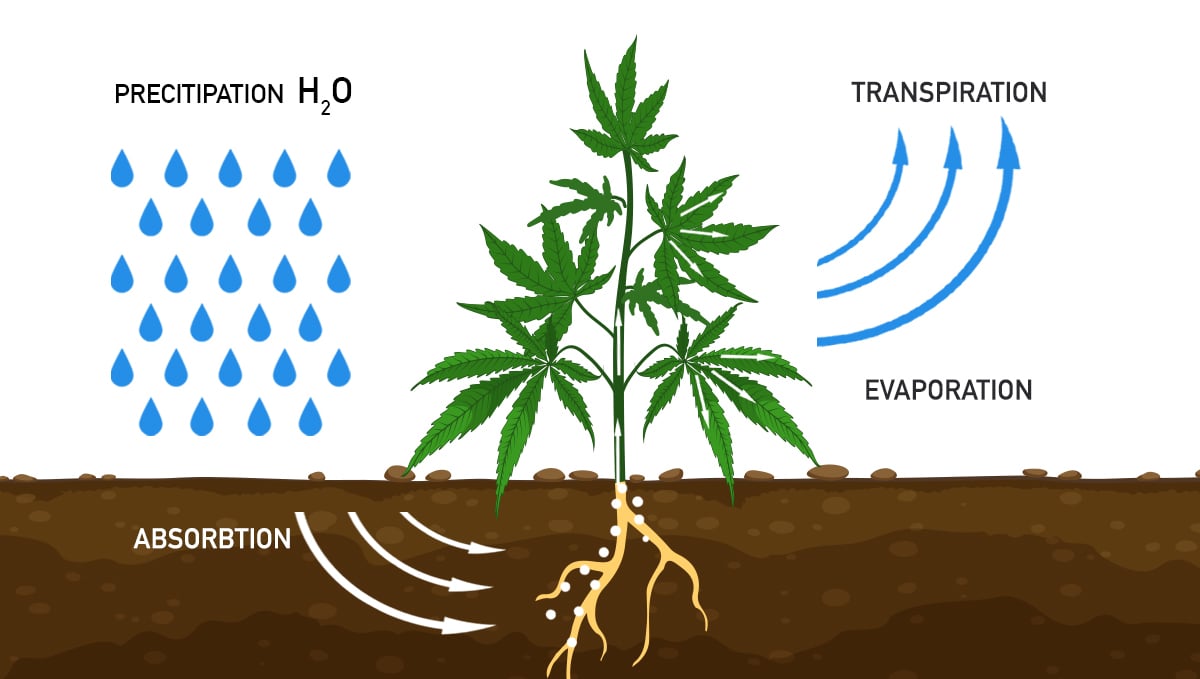
CO2 is important in this process because it can affect how much the stomata opens or closes, which will affect the transpiration process and for bigger plants that can absorb a lot of water, it’s essential that the CO2 levels are on point to avoid slowing down growth.
Photosynthesis
Apart from being important for transpiration, CO2 levels play a big role in photosynthesis. As you may know, plants perform photosynthesis to produce sugars that are essential for plant growth.
Plants use CO2 and energy from the sun (or light fixture) to make the sugar molecules and oxygen which are then synthesized thanks to the transpiration process, producing glucose which is vital for cannabis plants and all other plants to grow.
Respiration
The process of respiration is a vital process that uses the sugars produced during photosynthesis and is basically a chemical reaction that occurs in the cells of all living beings, used to provide energy for plant growth. In plants, these oxygen and CO2 exchanges happen via the pores (called stomata) found in the leaves, stems, and roots while photosynthesis takes place in the leaves and stems only.
When this respiration process occurs, plants will use the glucose produced during photosynthesis to provide the plant with energy.
But unlike photosynthesis, there are two types of respiration:
- Dark respiration;
- And Photorespiration.
Photorespiration
During the day, plants take in CO2 and release oxygen through photosynthesis (in the presence of light) which is the basic process most of us learned in school and know.
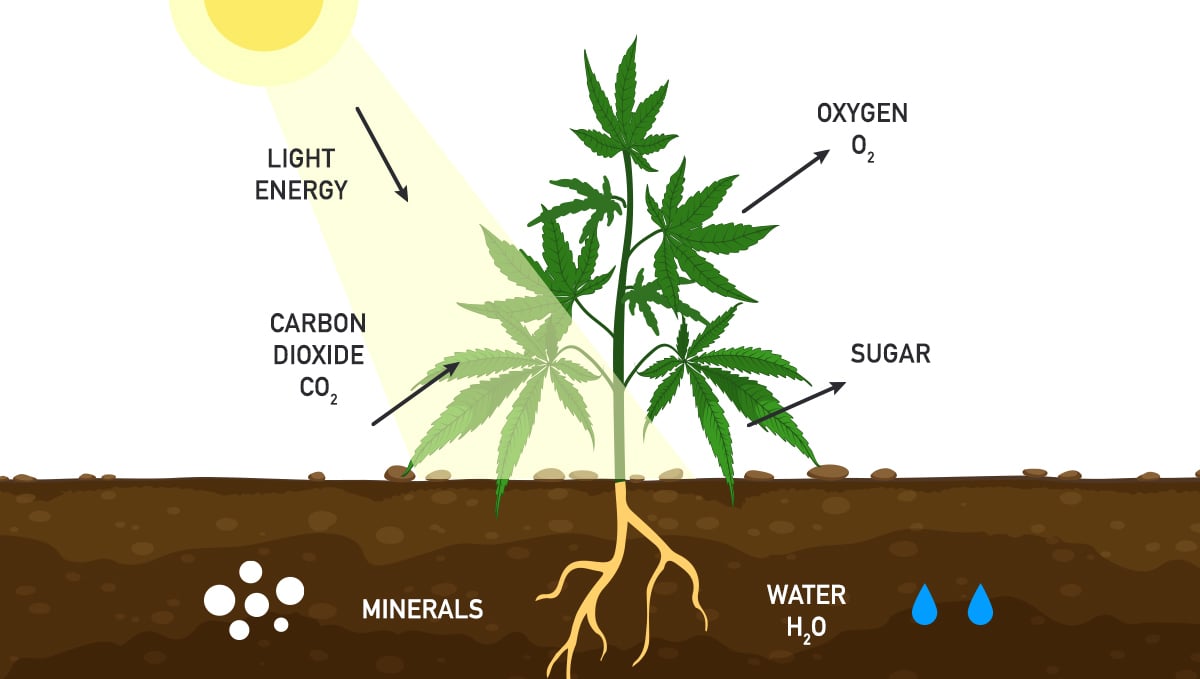
But when a plant is not performing photosynthesis, it will still need to “breathe”, and that’s where the dark respiration comes in.
Dark Respiration
Dark respiration is a form of respiration that occurs when plants are not performing photosynthesis, meaning that they are not under sunlight or artificial lighting. During this process, plants release CO2 due to the processes they’re performing and absorb oxygen through the roots.
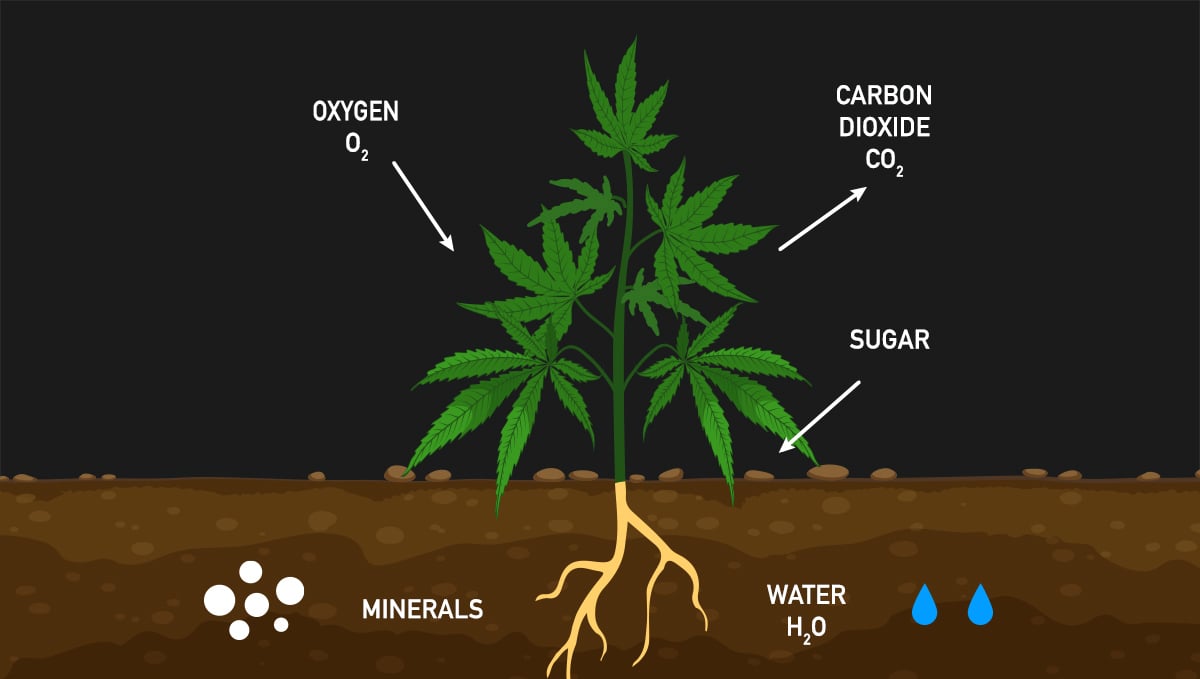
Have in mind that dark respiration isn’t exclusive to cannabis plants, other living things such as microorganisms also perform dark respiration so you might be familiar or might have heard about it.
3. When should you use CO2?
Carbon dioxide can be used in the vegetative and flowering stage but plants only need CO2 when performing photosynthesis so you should only inject it when the lights are turned on.
Also, you shouldn’t increase the CO2 levels always, carbon dioxide should be used in combination with a number of factors, without these elements you may be able to see improvement but won’t be what you expect.
Vegetative stage
When using CO2 during the vegetative stage, your plants will grow faster, stronger and healthier, and when done correctly you will benefit from the bigger yields and in other things like not having to worry with giving support to the branches.
Flowering stage
Some growers say you should only inject carbon dioxide during the first 2-3 weeks of flowering, although others say that an increased CO2 level up to 2 weeks before harvest can result in denser buds, there’s no proof and it’s basically up to you and what you find works in your case.
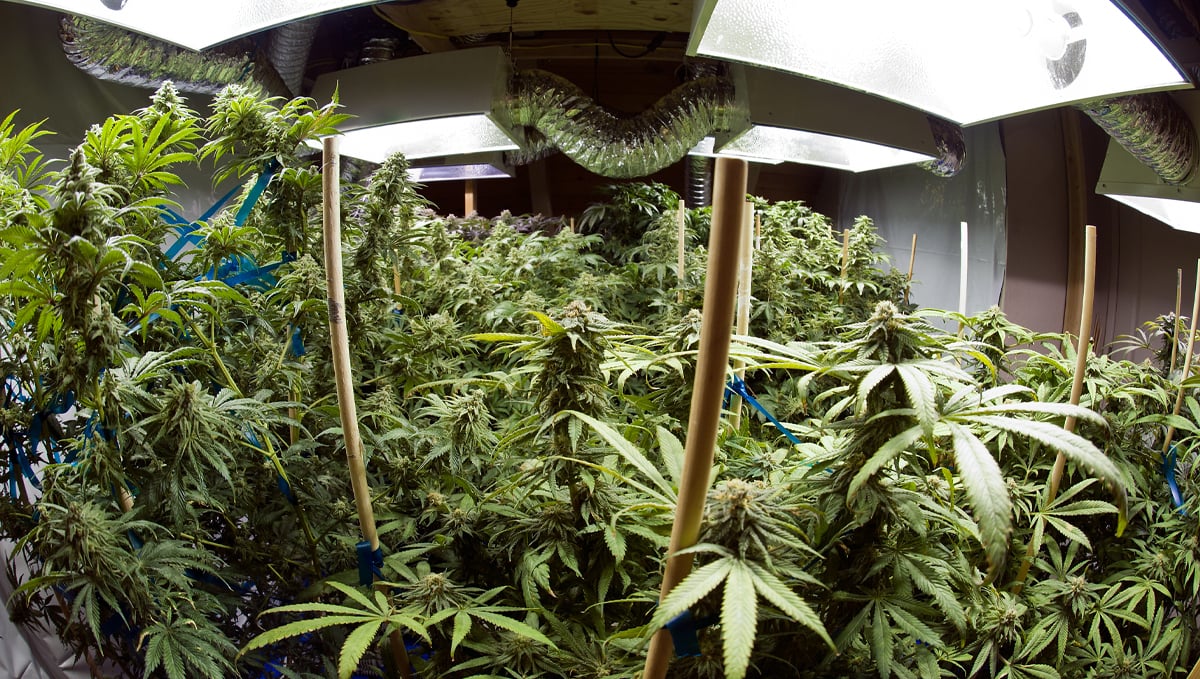
To properly use CO2, you need to use high-intensity and good quality lights, and according to the type of light you will have to adjust the carbon dioxide levels, temperature and amount of nutrients because cannabis uses CO2 in the presence of light, so the higher the intensity, the more carbon dioxide it will need.
4. Pros and cons of CO2
Despite the benefits, adding CO2 can be expensive. You should think if the benefits are worth it before starting injecting CO2 into your growing space.
Pros
Faster growth and bigger yields
If you’re an experienced grower and have a top notch growing space, injecting CO2 can help you grow bigger plants that produce better quality and bigger buds.
Grow in higher temperatures
Because cannabis plants use CO2 to “ breathe”, a high concentration (1200-1500PPM) of carbon dioxide allows you to have higher temperatures in the growing room, being able to reach up to 30°C.
Safety
CO2 can help you mask the smell because some methods of injecting carbon dioxide will create a natural smell that helps cover up the cannabis smell.
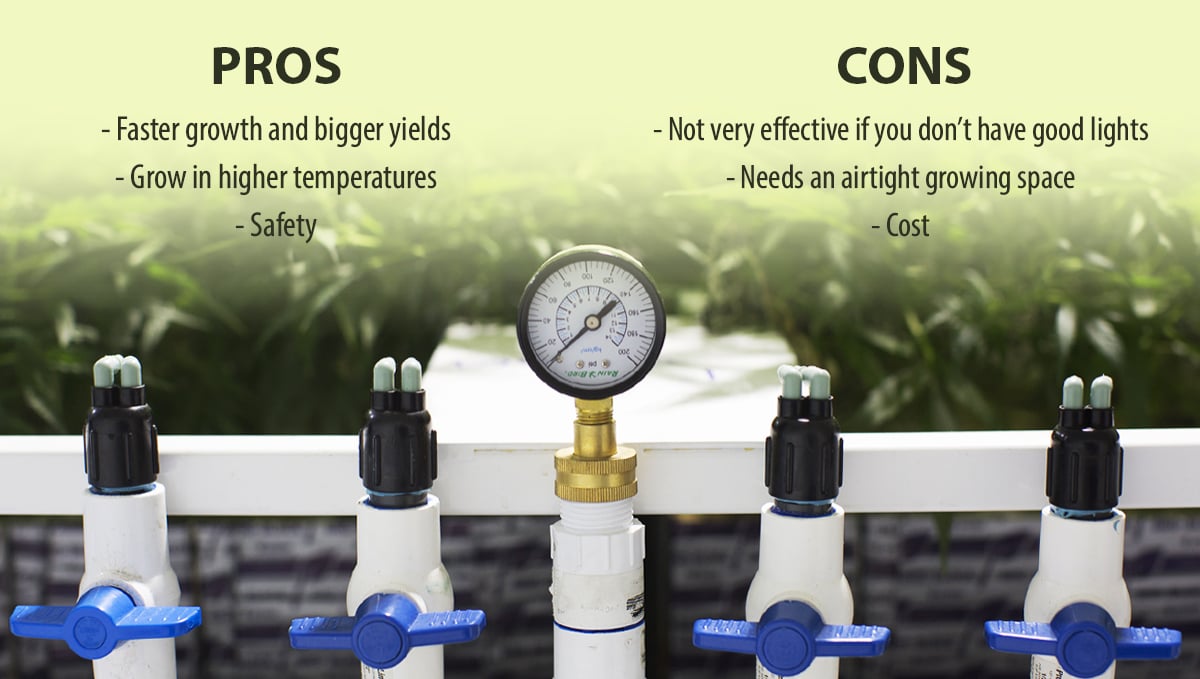
Cons
Not very effective if you don’t have good lights
Most common lights aren’t strong enough to use CO2 appropriately, you will need a very strong LED or Light bulb to benefit from this. You can saturate a growing room with high concentrations of CO2, but without a compatible light intensity, you won’t experience any noticeable improvements. Think about the photosynthesis formula that we touched upon higher up the page. Plants need an ample amount of CO2, water, and light in order to conduct this energy-forming reaction. If you drive up CO2 levels in the air, without compensating with a higher amount of light intensity and enough water, then your plants simply can’t capitalize on the increase in particles. However, pump out more photosynthetically active radiation (PAR) and supply just enough water, and you’ll give your plants the resources they need to put the additional CO2 to good use.
Needs an airtight growing space
When trying to maintain an elevated CO2 PPM, you will need an airtight growing space so it doesn’t dissipate.
Cost
Depending on the size of your growing room, it can be quite expensive to inject CO2 because the cheapest methods aren’t very good unless you have a small number of plants so you will have to invest a bit.
5. How much CO2 should I use?
Plants are used to high carbon dioxide levels and even though we don’t see it, there is actually CO2 in the air, found at approximately 400PPM.
When injecting CO2 we need to first know our light intensity to then know the limit on how much CO2 our plants can take but have in mind that the maximum is around 1500PPM, the following table gives you an idea of how it should be used.
CO2 and Light intensity
| Light Intensity (μmol/m2/s) | CO2 (PPM) | Relative Photosynthesis % |
|---|---|---|
| 200-450 | 400 | 0-25 |
| 450-800 | 800 | 25-50 |
| 800-1000 | 1400 | 50-75 |
| 1000-1400 | +1400 (gradually increase, check and adjust) | 75-100 |
If you see your plants getting weak or yellow stop using CO2 and try to find out what’s wrong, when this happens it’s usually too much CO2 accumulated or it’s too hot.
Remember that CO2 doesn’t do magic and increasing the CO2 without the appropriate environment will damage your plants.
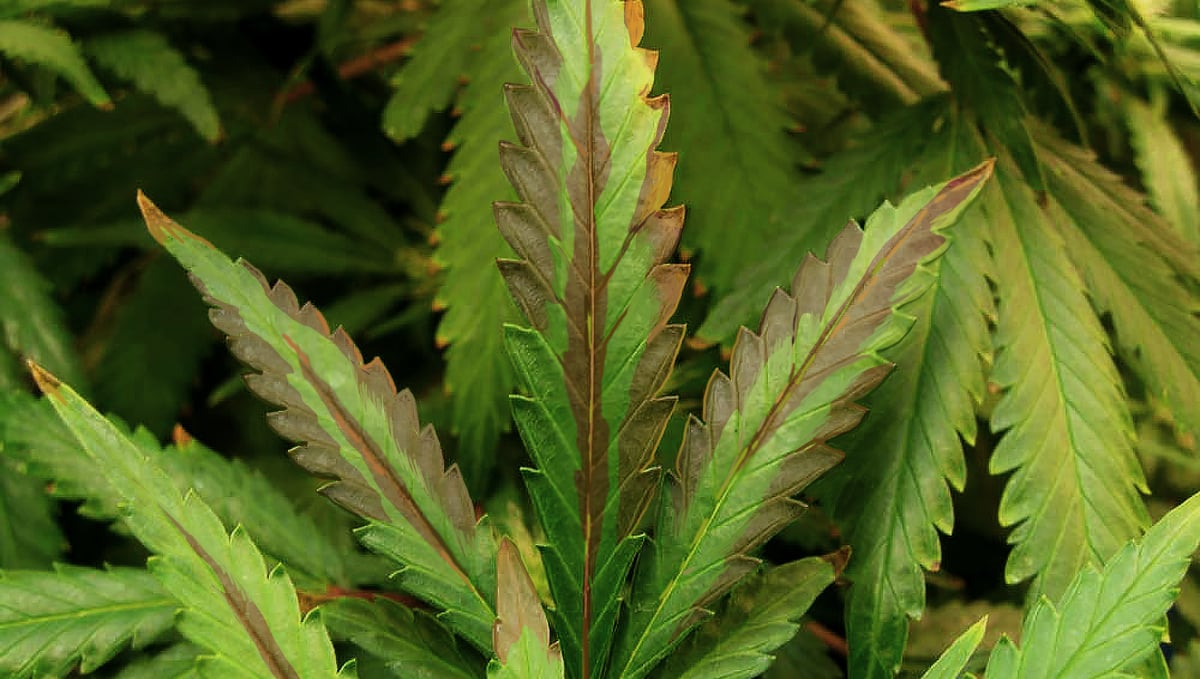
When growing indoors it is crucial to have a ventilation system for air exchange, under good lights plants can use CO2 very fast and when the levels fall to around 200PPM the growing rate will be slowed down.
If you don’t want to invest in an exhaust fan or CO2, you can easily increase it by opening your window and letting CO2 in and oxygen out.
6. Recommendations
- Always make sure you can benefit from CO2, using carbon dioxide inappropriately can damage your plants.
- To know if you need to inject CO2 read the specifications, most manufacturers will indicate if you need to increase the levels and how much.
- Have a good CO2 meter in your growing space because if the levels go over 2000PPM it will be toxic for your plants.
- You can stop injecting CO2 when the lights are off because plants can’t perform photosynthesis without light.
7. Calculating the Amount of CO2 Required
So, you have been growing for a while. Your yields have been good, but you are looking for any possible way to help them increase. CO2 may be the answer - but that doesn't mean you should instantly run out and buy a tank of CO2, place it in your grow space and open the valve. This would not only be dangerous for your own health, but it would most likely kill your plants.
Thankfully, there is a really neat and simple calculation that you can do to help you work out exactly how much CO2 needs to be added to your grow room. Let's say we want to increase the CO2 levels to 1400ppm. You just need to multiply the cubic area of the room by 0.0014. To find the cubic area of your grow space you will need to know the exact dimensions of your room. As an example, let's say the grow room is 5 meters wide, 5 meters long, and 2 meters high. By multiplying the numbers you will get the cubic area - so 5 x 5 x 2 = 50 cubic meters. Then you just multiply 50 x 0.0014 = 0.07 cubic meters of CO2 needed in your grow space.
8. How to add CO2 to your grow room
Now that you know how much does CO2 levels help yields, you need to know that there are several ways to inject carbon dioxide into your growing room, some are more suited for bigger grows than others and can be more expensive but there are ways to increase the CO2 levels in all types of grows.
Keep in mind that regular air only has about 400 PPM of CO2, so unless you seal your grow space any added CO2 will leak out until the internal atmosphere has regulated back down to this 400 PPM figure. This may not be the biggest issue if you are only planning to slightly raise the CO2 level, but if you want to maintain a constant CO2 reading of 1100 - 1500 PPM you should make absolutely certain that the grow space is completely sealed. If not, you will just be wasting a bunch of CO2. If you do decide on sealing your grow area and supplementing CO2 at high levels, there are a few key details to keep in mind.
Many growers recommend keeping the temperature between 85°F (30°C) and 95°F (35°C) inside the grow room to ensure that the plants can actually absorb all of the extra CO2. Be sure to keep a close eye on the plants and make sure they do not suffer from any heat stress. Some strains handle the higher temperatures better than others, so even if these temps have worked fine for previous grows it is best to always be aware of how your current grow is coping with the increased heat. It can be a bit trickier to control the humidity once you seal off a grow area. Plants release water vapor alongside oxygen, which in a sealed environment, can raise the humidity levels quickly. I recommend trying to keep the humidity levels below the 60% mark for sealed grow rooms. A dehumidifier may be needed in this situation.
CO2 generator
Carbon dioxide generators are easy to use and can have an integrated timer that will turn on or off automatically when needed, the downside is they work by burning natural gas or propane and will produce heat so it’s better suited for big growing spaces in which the climate is controlled.
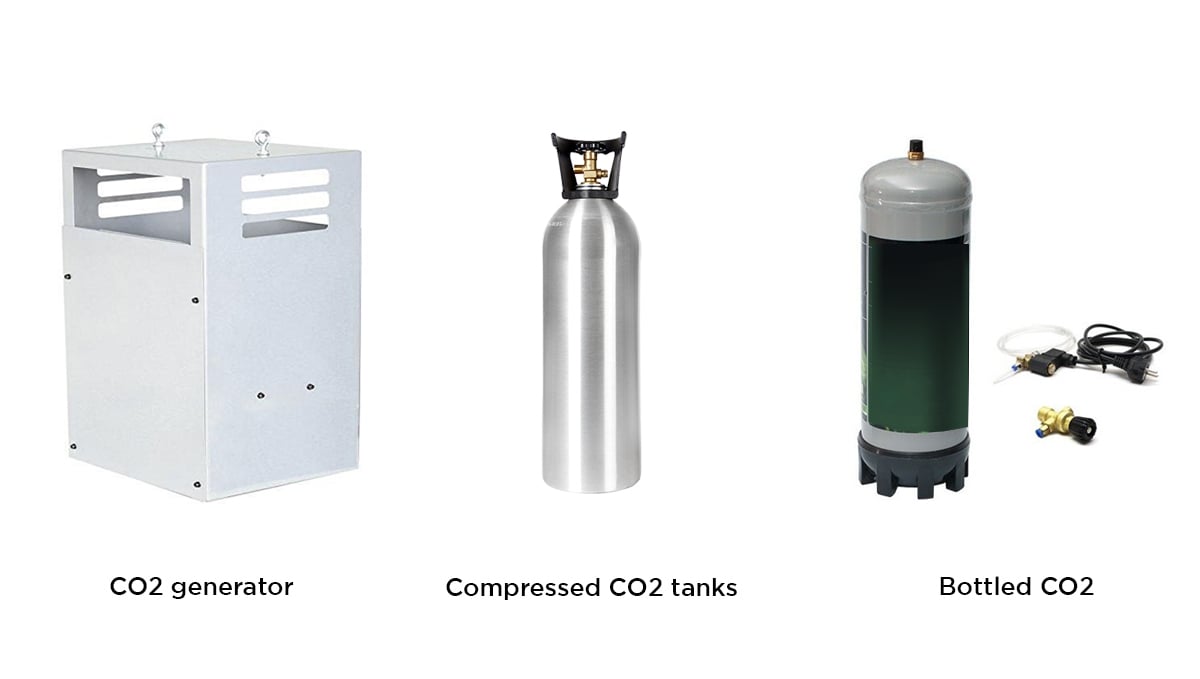
Compressed CO2 tanks
This is the ideal choice for smaller growing spaces, depending on when you live, it can be fairly easy to find CO2 tanks.
CO2 tanks contain saturated carbon dioxide so they don’t produce heat but you will need to buy equipment to automate it if you wish to.
Bottled CO2
Some brands sell bottled CO2 for those who don’t want to deal with expensive or heavy equipment, this easy-to-work-with pre-packaged carbon dioxide bottles content pressurized CO2 that will slowly release it into your growing room but because you cannot seal it after, you will have to buy a bottle after every 5-7 days and it can get expensive.
It really doesn't matter how you do it as long as you do it correctly and with the appropriate equipment, if you do it properly you'll definitely see a big difference.
Alternative CO2 Injection Methods
If you don’t want to spend too much with any of the equipment mentioned above, there are alternative methods that are cheaper at first but can end up being more expensive either due to the time you’ll spend or simply because they don’t last long and aren’t as effective as the more expensive methods.
Compost
Composting is similar to the fermentation process because it will also produce small amounts of CO2 and also produce a bad odor inside your grow space.

Just like the method mentioned above, it's only recommended to use in smaller grow spaces due to not being very effective and the possibility of attracting bugs or mold into your tent.
Fermentation
Fermentation is a natural process that produces CO2, making it a cheap and easy method to inject CO2 into your grow tent but has its downsides, for example, fermentation produces a bad odor that can attract bugs to your grow room.
Also, this method is definitely not recommended for bigger grow spaces; This method will only increase the CO2 levels a tiny bit so we recommend using it when growing around 2-3 plants.
CO2 Bags
CO2 bags are quite popular amongst home growers due to being relatively cheap; These bags consist of fungi growing in organic matter, which produces CO2.
The downside of this method is that it’s not easy to grow the fungi correctly so if you’re a beginner grower or cannot keep good growing conditions, it may be quite hard to use the CO2 bags.
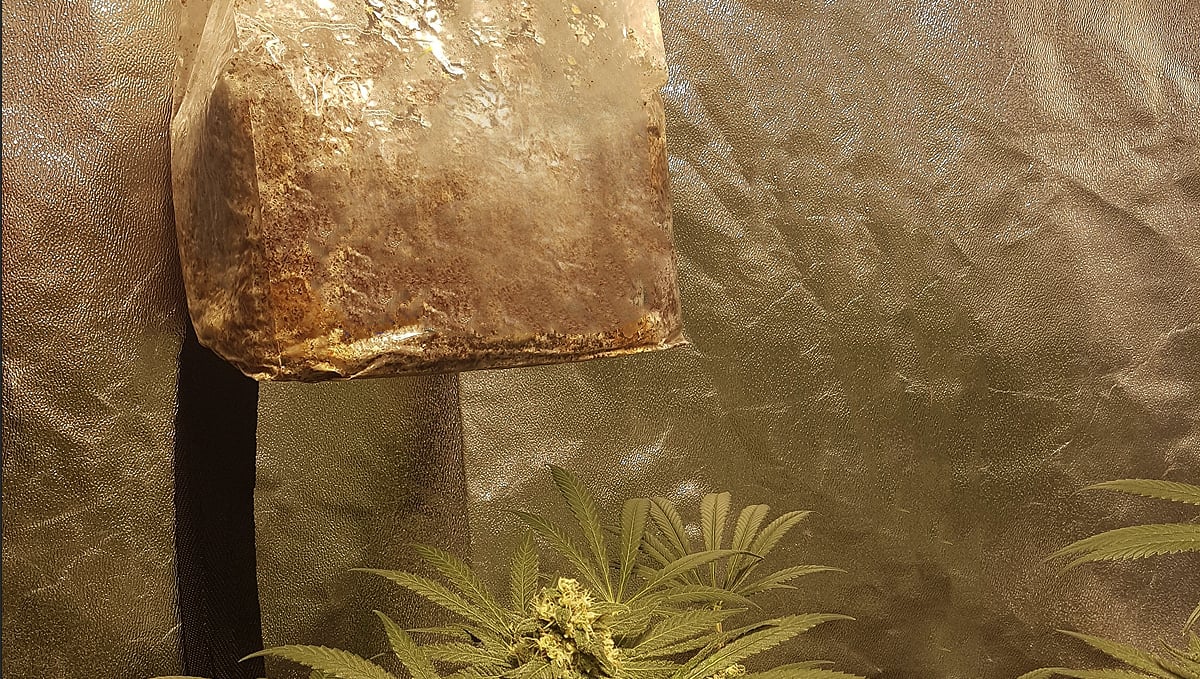
As a guideline, you’ll need 4 CO2 bags per 2m2, meaning that this method can become quite expensive if you’re growing in a bigger grow space because they don’t produce much CO2.
Dry Ice
Dry ice basically is solid and cold CO2 which gets released when it gets warm, making it an effective short-term solution but not a very good long-term solution due to the cost; This is because you will have to add the dry ice every day (or even multiple times per day) which can get a bit expensive depending on how you'll be using it.
9. In conclusion
Now that you know how to increase cannabis yield with CO2, remember that a CO2 grow room is better suited for growers who already maxed out their growing equipment and are looking for alternatives to improve their harvests, if you’re a new grower you indeed can try it but it’s better to invest in good growing equipment before trying carbon dioxide. It’s impossible to know how much will CO2 levels increase yields but definitely, CO2 boosts yields if you are using it properly; This is because, by adjusting the CO2 levels, you are adjusting how the plants perform their basic processes so it’s better to do it once you understand these processes a little bit and know what you’re doing.
If you use CO2 in your grow room, please feel free to share your experience, leave a comment below!
This post was most recently updated on March 23, 2022.
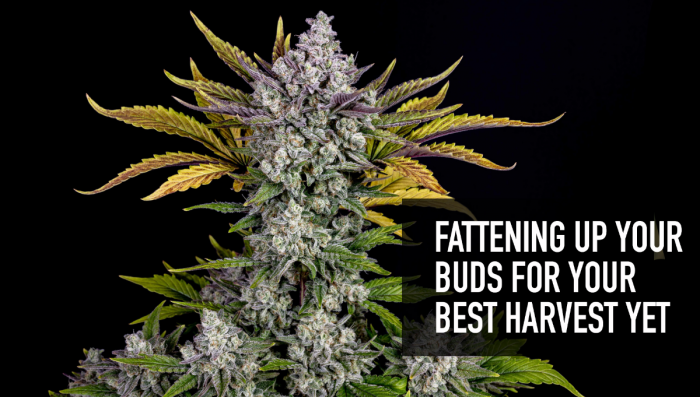







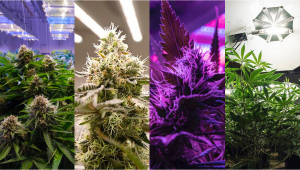
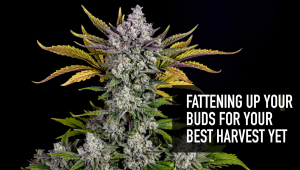

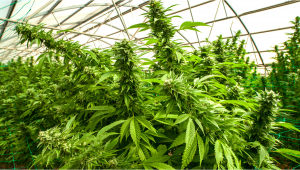
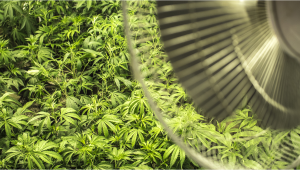
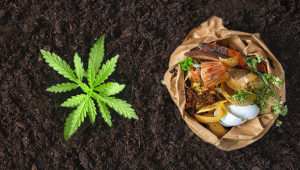


Comments